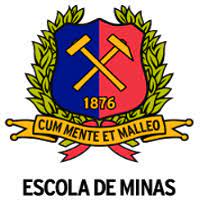As cavidades naturais subterrâneas despertam a curiosidade da humanidade desde a pré história e até os dias atuais influenciam no nosso cotidiano. As cavernas são vazios formados por algum evento natural dentro de uma estrutura rochosa, com ou sem abertura identificada e, que de alguma forma, possa ser penetrável pelo homem. A legislação voltada para a proteção e conservação de cavernas é recente, com seus últimos desdobramentos ocorridos entre os anos de 2008, publicação do Decreto 6.640, e 2009, publicação da Instrução Normativa nº 02 do Ministério de Meio Ambiente. A mineração causa considerável impacto nas cavernas, quando na área de uma jazida. Dentre eles, destacam desde a supressão de cavidades, ou impactos na estabilidade física e bioespeleológica das mesmas. Por outro lado, a legislação atual, causa considerável impacto nas reservas lavráveis quando da ocorrência de cavidades na área. Este trabalho tem como objetivo demonstrar como as cavidades naturais podem interferir na viabilidade econômica de um projeto de mineração. E, com base na legislação de proteção às cavidades naturais, realizar um estudo de forma a verificar o nível de influência que as cavidades podem ter sobre viabilidade econômica de um projeto de mina. Para realização desse estudo, três cenários de cava foram adotados para uma jazida hipotética. Os resultados demonstram o impacto da legislação na viabilidade de um projeto de mina e na reserva lavrável, para o três cenários considerados e reforçam a necessidade de pesquisas para conciliar a necessidade de preservação de cavidades naturais subterrâneas com a atividade de mineração.
Since prehistoric times, the natural underground cavities awaken the human curiosity and until nowadays they influence our everyday lives. The caves are hollow spaces formed from a natural event inside a rocky structure, with or without an identified entrance, and that somehow, can be penetrated by a man. The legislation for the protection and conservation of caves is recent, with its last results having occurred between the year 2008, publication of the Decree 6.640, and the year 2009 , the publishing of the Normative Instruction Number 2 by the Brazilian Environment Ministry (Ministério de Meio Ambiente). The mining concerned, causes a significant impact on the caves, when it is in a mine field. Among the impacts, it can be highlighted: the suppression of cavities, or physical and bio- speleological stability of the caves. On the other hand, the actual legislation causes a significant impact on the mineable fields when there are cavities around the area. This article aims to show how the natural cavities can interfere in the economic viability of a mining project. In addition, basing on the natural cavities protection legislation, complete an investigation in a way to verify the level of influence that a cavity can have on the economic viability of a mine project.For the conduction of this research, three scenarios of open pit were considered for a hypothetical mine field. The results demonstrated the impact of the legislation in the viability of a mine project and in the mineable reservation for the three considered scenarios, and reinforced the necessity of researches to conciliate the need for conservation of the natural underground cavities with the mining activities.

